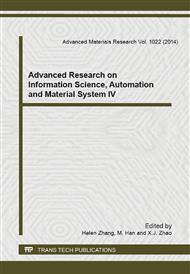[1]
Marc L, Wijnand I. Visual Discomfort and Visual Fatigue of Stereoscopic Display: A Review. Journal of Imaging Science and Technology. 2009, 53(3): 03020101-03020114.
Google Scholar
[2]
Céline Devisme, BjÖrn Drobe etc. Stereoscopic depth perception in peripheral field and global processing of horizontal disparity gradient pattern. Vision Research. 2008, 48: 753-764.
DOI: 10.1016/j.visres.2007.12.003
Google Scholar
[3]
Simon J.D. Prince, Brian J. Rogers. Sensitivity to disparity corrugations in peripheral vision. Vision Research. 1998, 38: 2533-2537.
DOI: 10.1016/s0042-6989(98)00118-7
Google Scholar
[4]
Nirel W, Robert F H. Mechanisms underlying global stereopsis in fovea and periphery. Vision Research. 2013, 87: 10-21.
DOI: 10.1016/j.visres.2013.05.003
Google Scholar
[5]
Yan S M. Digital stereoscopic Test Charts. People's medical publishing house, (1985).
Google Scholar
[6]
Hiroshi M, Nobuyuki S etc. The magnitude of stereopsis in peripheral visual fields. Kitasato Med J 2012, 42: 1-5.
Google Scholar
[7]
Daniel PM, Whitteridge D. The representation of the visual field on the cerebral cortex in monkeys. J Physiol. 1961, 159: 203-21.
DOI: 10.1113/jphysiol.1961.sp006803
Google Scholar
[8]
Curcio CA, Allen KA, Topography of ganglion cells in human retina. J Comp Neurol, 1990, 300: 5-25.
DOI: 10.1002/cne.903000103
Google Scholar
[9]
Zhe Qu, Silu Fan, Yulong Ding, Yan Song, Lin Chen. Functional asymmetry between upper and lower visual fields under sustained attention: an event-related potential study in humans. Neuroscience letters(under review).
Google Scholar
[10]
Sihua Xu, Zhe Qu etc. A research on Asymmetry between the upper and lower Visual Fields. Psychological Science, 2007, 30(1): 131-133.
Google Scholar
[11]
He S, Cavanaugh P, Intrilligator J. Attentional resolution and the locus of visual awareness. Nature, 1996, 383: 334-337.
DOI: 10.1038/383334a0
Google Scholar
[12]
Rubin N, Nakayama K, Shapley R. Enhanced perception of illusory contours in the lower versus upper visual hemifields. Science, 1996, 271: 651-653.
DOI: 10.1126/science.271.5249.651
Google Scholar


